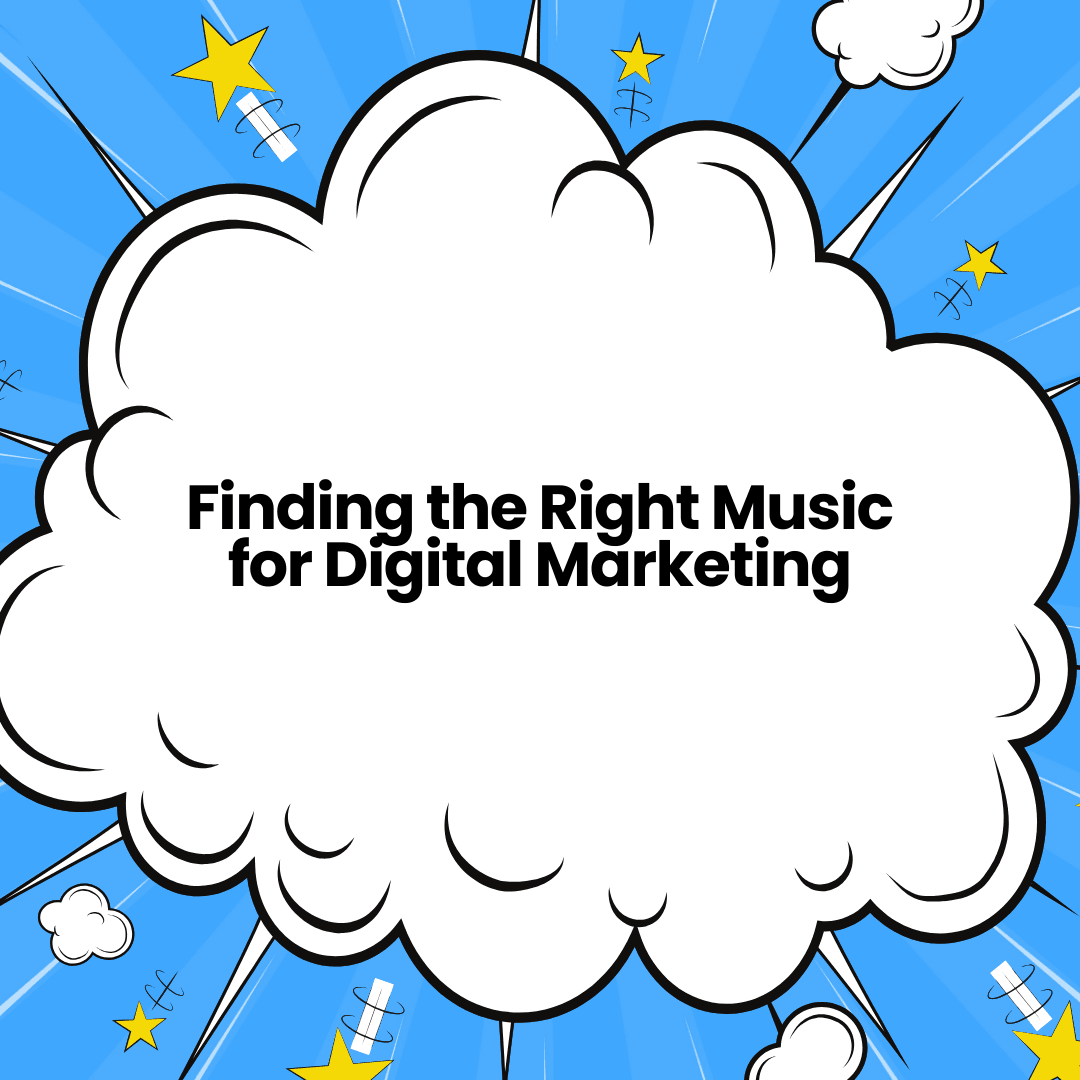In today’s digital landscape, music has become a powerful tool for engaging audiences, enhancing brand messaging, and creating a memorable experience in digital marketing. But with an overwhelming number of options and restrictions, finding the right music for your marketing content can be challenging. Whether you’re working on ads, social media content, or longer video pieces, here are some tips on sourcing the best music for your digital marketing campaigns.

1. Define Your Brand’s Voice and Target Audience
- Every brand has its own unique personality, and music is a key element in conveying that identity. Start by defining what your brand sounds like: is it energetic and youthful, or elegant and refined? Knowing your target audience’s preferences can help you choose music that resonates with them, creating a stronger emotional connection.
- For example, if you’re targeting young, tech-savvy consumers, you might look for upbeat electronic or pop tracks. Alternatively, for a luxury brand, you might choose classical or ambient music.
2. Understand Licensing Options
- When sourcing music, it’s important to understand licensing. Using copyrighted music without proper permission can result in hefty fines and damage to your brand’s reputation. Here are a few common licensing types:
- Royalty-Free: Pay once to use the music multiple times, often with fewer restrictions.
- Creative Commons: Some artists allow their music to be used for free with specific terms (e.g., crediting the artist).
- Public Domain: This includes older works where copyright has expired, and no licensing fee is required.
- Custom Licensing: If you want a specific commercial track, you can directly reach out to license it, though it’s usually more expensive.
- Make sure to read the fine print of any license agreement, especially if you’re using the music for advertising or large-scale marketing campaigns.
3. Leverage Music Libraries
- Music libraries like Epidemic Sound, Artlist, AudioJungle, and PremiumBeat are treasure troves of high-quality tracks across genres and moods. Many libraries offer a subscription model with access to thousands of tracks, while others provide per-track licensing.
- These libraries allow you to search by mood, genre, or duration, making it easy to find a track that aligns with your brand’s message.
4. Explore Independent Artists and Platforms
- Platforms like SoundCloud, Bandcamp, and Audiio have vibrant communities of independent artists who may be open to collaborations or licensing arrangements at a lower cost. By working with emerging musicians, you also get the chance to bring fresh, unique sounds to your marketing content.
- Additionally, some artists may be interested in a barter system where they receive promotion in exchange for allowing you to use their music.
5. Consider Custom Compositions
- For brands with a budget for music, custom compositions can be a fantastic investment. Custom music allows you to create something that’s entirely unique and aligns perfectly with your message and pacing.
- You can work with freelance composers through platforms like Upwork or Fiverr, or connect with local musicians and producers. This option is ideal for brands that want a distinctive audio signature.
6. Use AI-Generated Music
- With AI-driven music platforms like Amper Music and AIVA, brands can now generate music tailored to specific moods or tempos. These tools let you experiment with custom sounds at a fraction of the cost, making it a good choice for marketers who need background music that’s original and scalable.
- AI-generated music is still developing, but it offers exciting potential for brands that want a sound that no one else has used.
7. Match Music to Your Content’s Purpose and Platform
- Consider where your audience will experience your content. For example, social media content typically requires shorter, punchier music to capture attention within seconds, while a video ad or explainer video may call for longer, more immersive soundtracks.
- The style of music should also align with the action or message in the content. For instance, if you’re creating an ad about a luxury product, soft ambient music may elevate the brand’s elegance, while an energetic ad for a fitness product would benefit from an upbeat, high-tempo track.
8. Experiment and Test
- Once you’ve selected potential tracks, test them in different segments of your audience to see what resonates best. Split tests and feedback can reveal which styles or genres work best for your brand, helping you fine-tune your future music selections.
- Platforms like YouTube or Facebook can provide insight into engagement metrics that will guide your future music choices.
9. Keep Track of What’s Working
- Over time, you’ll find patterns in the music that works best for your brand. Establish a music strategy and start building a library of go-to tracks or themes that consistently perform well. Not only will this make future campaigns easier, but it will also reinforce brand recognition by creating a consistent sound profile.
Conclusion
Sourcing music for your digital marketing isn’t just about finding a song—it’s about enhancing the way your brand communicates with its audience. By understanding your brand’s voice, exploring different licensing options, experimenting with platforms, and matching music to your message, you can create marketing content that’s engaging, memorable, and legally sound. Music has the power to elevate your digital marketing from ordinary to unforgettable, so take the time to choose wisely. Have questions about digital marketing? Feel free to contact us anytime!

